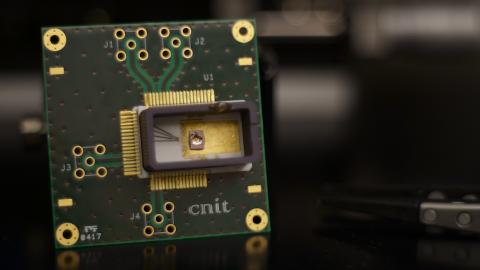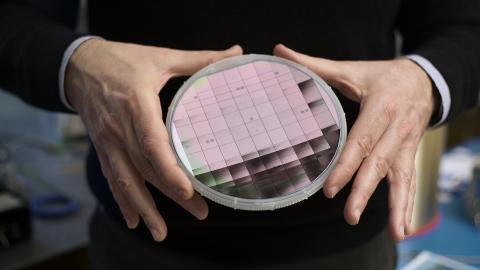SANT’ANNA SCHOOL AND CNIT RESEARCHERS PRESENT WORK IN NATURE PHOTONICS JOURNAL ON COMPACT AND ENERGY-EFFICIENT HYBRID GRAPHENE-SILICON PHASE MODULATORS AS A NEW PLATFORM FOR OPTICAL DEVICE DEVELOPMENT

Graphene is ideal for optoelectronic components in integrated photonic devices. The hybrid graphene-silicon phase modulators developed by Italian researchers of Sant’Anna School and CNIT Consortium (University Consortium for Telecommunications) will be used in the next generation of communications systems as they increase the performance of datalinks in terms of capacity, lower energy consumption and costs.
Graphene Flagship (the Graphene Flagship coordinates over 150 academic and industrial research groups in 23 countries, and has more than 60 associate members) researchers based at CNIT and the TECIP (Telecommunications, Information and Perception Technologies) Institute of Sant’Anna School have demonstrated that the graphene-based device has a modulation efficiency of 0.28 V cm at 1,550 nm, 5 GHz electro-optical bandwidth and operates at 10 Gb s–1 with 2 V peak-to-peak driving voltage in a push–pull configuration for binary transmission of a non-return-to-zero data stream over 50 km of single-mode fiber.
With a budget of €1 billion, the Graphene Flagship represent a joint, coordinated research, forming Europe's biggest ever research initiative. Under the scientific supervision of Marco Romagnoli, the research team has been working on ultra-fast modulators for data communications applications. The research work represents an important step forward in the effort to create an integrated platform with low-cost process. Also funded by Tuscany Region authority, industrial partners (IMEC – the European leading R&D and innovation hub in nanoelectronics and digital technologies) and with the cooperation of the University of Cambridge, the study demonstrates that graphene can be integrated with standard industrial processes for high speed optical interconnects.
Optical long-haul telecom systems have emerged since the 1980s. Over the past two decades, to meet the needs of the exponential growth in the information industry and the global Internet traffic, silicon photonics and photonic integration have been recognized as a potential solution for high-speed data interconnections, high quality signal processing and high-performance computing. Higher data rates and higher interconnection densities were obtained using photons as the medium to detect, process, and transmit information.
Silicon modulators convert an applied external electrical signal into variations in the fundamental characteristics of light in an optical waveguide and the recent developments in high-quality graphene will allow compatibility, integration and limited diffraction. The flexibility of graphene will offer low development and fabrication costs by eliminating the need for multiple detector and modulator designs.
“As the control of data and information (datacenters, cloud-computing, social networks) becomes more reliant on the efficient transport of photons, the integrated graphene is an essential step to bring to fruition a multi Gb/s data transmission for 5G communications, IoT and software architectures”, said Giampiero Contestabile, researcher at the TECIP (Telecommunications, Information and Perception Technologies) Institute of Sant’Anna School, who co-authored the paper published in Nature Photonics.
Cover photo: the hybrid graphene-silicon phase modulators developed by Italian researchers of Sant’Anna School and CNIT Consortium (University Consortium for Telecommunications)
Publication in Nature Photonics
V. Sorianello, M. Midrio, G. Contestabile, I. Asselberghs, J. Van Campenhout, C. Huyghebaert, I. Goykhman, A. K. Ott, A. C. Ferrari and M. Romagnoli, “Graphene–silicon phase modulators with gigahertz bandwidth”, Nature Photonics 12, 40–44, January 2018







